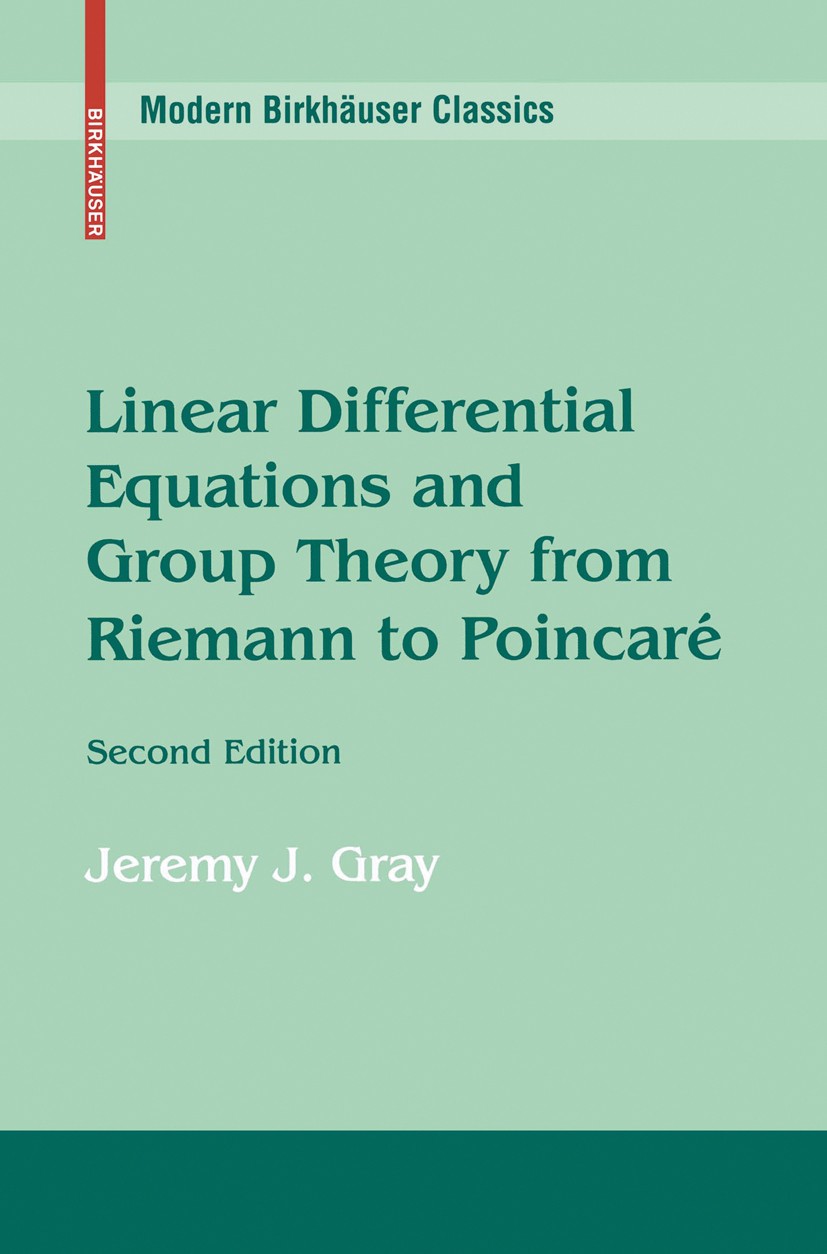| 书目名称 | Linear Differential Equations and Group Theory from Riemann to Poincare | | 编辑 | Jeremy J. Gray | | 视频video | http://file.papertrans.cn/587/586302/586302.mp4 | | 概述 | Chronicles important events not covered anywhere else.Discusses the history and development of ideas, not just mathematicians | | 丛书名称 | Modern Birkhäuser Classics | | 图书封面 |  | | 描述 | .This book is a study of how a particular vision of the unity of mathematics, often called geometric function theory, was created in the 19th century. The central focus is on the convergence of three mathematical topics: the hypergeometric and related linear differential equations, group theory, and on-Euclidean geometry...The text for this second edition has been greatly expanded and revised, and the existing appendices enriched with historical accounts of the Riemann–Hilbert problem, the uniformization theorem, Picard–Vessiot theory, and the hypergeometric equation in higher dimensions. The exercises have been retained, making it possible to use the book as a companion to mathematics courses at the graduate level.. | | 出版日期 | Textbook 2008Latest edition | | 关键词 | Algebra; Equations; Felix Klein; Group theory; History; History of Mathematics; Lazarus Fuchs; Poincaré; Rie | | 版次 | 2 | | doi | https://doi.org/10.1007/978-0-8176-4773-5 | | isbn_softcover | 978-0-8176-4772-8 | | isbn_ebook | 978-0-8176-4773-5Series ISSN 2197-1803 Series E-ISSN 2197-1811 | | issn_series | 2197-1803 | | copyright | Birkhäuser Boston 2008 |
The information of publication is updating

|
|
 |Archiver|手机版|小黑屋|
派博传思国际
( 京公网安备110108008328)
GMT+8, 2025-12-27 14:02
|Archiver|手机版|小黑屋|
派博传思国际
( 京公网安备110108008328)
GMT+8, 2025-12-27 14:02


